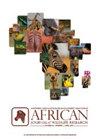Biting the Hand that Feeds You: Attacks by Captive Carnivores Cause Deaths and Injuries in South Africa
IF 1
4区 环境科学与生态学
Q2 Agricultural and Biological Sciences
引用次数: 0
Abstract
INTRODUCTION South Africa has substantial and growing populations of captive large carnivores with about 7979 captive lions (Panthera leo) (Creecy, 2019) and 600 captive cheetahs (Acinonyx jubatus) (Van der Merwe et al., 2016) as well as other big cats like tigers (Panthera tigris). No conservation planning processes have identified captive breeding as a requirement for the conservation of these species in the wild (Funston & Levendal, 2015; Miller et al., 2016; Van der Merwe et al., 2016) and it is widely recognized that captive-bred animals are not necessary or even appropriate for species restoration (Hunter et al., 2013). For many of these facilities, income is derived from captive wildlife tourism (Moorhouse, D’Cruze & Macdonald, 2017) in the form of visiting facilities, touch and interaction programmes, as well as voluntourism (Coals et al., 2019). A substantial commodity chain for the commercial trade in lions has been identified with three distinct sectors currently involved, namely the captive trophy hunting industry, non-consumptive tourism and volunteering sector, and the international trade of lion bones to Southeast Asia for the traditional medicine industry, with the potential for lions to move between these sectors (Green, Jakins, de Waal & D’Cruze, 2021). Wildlife tourism has a huge potential to benefit local livelihoods, create jobs, build awareness and promote conservation; however, there can also be negative welfare and conservation impacts (Moorhouse et al., 2015), particularly around captive wildlife. There are several well-documented concerns about the captive carnivore industry in South Africa including issues such as: welfare of the animals held within this industry (Green et al., 2022; Wilson & Phillips, 2021), transfer of zoonotic diseases (Green et al., 2020), hunting of captive lions and the resulting impact on wild lion populations (Lindsey, Balme, Midlane, Alexander & Craig, 2012), laundering of wild cheetahs through captive facilities (SANBI, 2019), management and implications of trade in lion parts (Williams, Loveridge, Newton & Macdonald, 2017) and potential reputational damage to Brand South Africa (Harvey, 2020). However, little attention has been given to aspects of human safety in captive wildlife facilities. In South Africa, there is no legal requirement for holding any kind of qualification before being permitted to own or work with captive large carnivores (Wilson & Phillips, 2021).There is no legislation governing how staff and tourists interact with captive predators to ensure the safety of both animals and humans and there are no national norms and standards or industry best practice protocols to ensure safe interactions (SATSA, 2019). In contrast, to conduct walking safaris with tourists in Big 5 wildlife areas, a Professional Trails Guide Certificate is required, which is obtained through the Field Guides Association of Southern Africa (FGASA) and accredited by the Tourism and Hospitality and Sport Education Training Authority (CATHSSETA). This certificate involves intensive training, including 600 hours of experience, 300 Big 5 dangerous game encounters, advanced rifle handling skills and first aid qualifications (FGASA, 2019). In the wild, animals pose very little threat to tourists and hence deaths and injuries are uncommon and usually related to human error (Durrheim & Leggat, 1999). However, attacks on people by captive wild animals, particularly large carnivores, are becoming more prevalent and concerning. Unlike domesticated pets that have lived in close alliance with humans for thousands of years, no matter whether large carnivores have been handraised and habituated, they remain wild with strong prey-drive and territorial instincts (Shepherd, Mills, & Shoff, 2014). Media reports frequently capture information on captive large carnivores attacking people, and with the advent of social media, these have become more accessible in recent years. Given that there is no legal requirement to report attacks of captive carnivores to authorities in South Africa, media and informal reports are currentl y the most reliable sources of information.咬喂你的手:在南非,被圈养的食肉动物袭击导致死亡和受伤
南非拥有数量庞大且不断增长的圈养大型食肉动物种群,大约有7979只圈养狮子(Panthera leo) (Creecy, 2019)和600只圈养猎豹(Acinonyx jubatus) (Van der Merwe等人,2016)以及其他大型猫科动物,如老虎(Panthera tigris)。没有任何保护规划程序将圈养繁殖确定为保护这些野生物种的必要条件(Funston & Levendal, 2015;Miller et al., 2016;Van der Merwe et al., 2016),人们普遍认为圈养动物对物种恢复是不必要的,甚至是不合适的(Hunter et al., 2013)。其中许多设施的收入来自圈养野生动物旅游(Moorhouse, D 'Cruze & Macdonald, 2017),形式包括参观设施、触摸和互动项目以及公益旅游(coal et al., 2019)。狮子商业贸易的大量商品链已被确定为目前涉及的三个不同部门,即圈养战利品狩猎业,非消费旅游和志愿服务部门,以及为传统医药行业向东南亚提供狮子骨头的国际贸易,狮子有可能在这些部门之间流动(Green, Jakins, de Waal & D 'Cruze, 2021)。野生动物旅游在改善当地生计、创造就业机会、提高意识和促进保护方面具有巨大潜力;然而,也可能对福利和保护产生负面影响(Moorhouse et al., 2015),特别是在圈养野生动物周围。关于南非圈养食肉动物行业,有几个有充分证据的担忧,包括以下问题:该行业内的动物福利(Green等人,2022年;Wilson & Phillips, 2021),人畜共患疾病的传播(Green等人,2020),圈养狮子的狩猎及其对野生狮子种群的影响(Lindsey, Balme, Midlane, Alexander & Craig, 2012),通过圈养设施对野生猎豹进行洗钱(SANBI, 2019),狮子器官贸易的管理和影响(Williams, Loveridge, Newton & Macdonald, 2017)以及对南非品牌的潜在声誉损害(Harvey, 2020)。然而,圈养野生动物设施中的人类安全问题却很少受到关注。在南非,在被允许拥有或与圈养的大型食肉动物一起工作之前,没有法律要求持有任何类型的资格(Wilson & Phillips, 2021)。没有立法规定工作人员和游客如何与圈养的捕食者互动,以确保动物和人类的安全,也没有国家规范和标准或行业最佳实践协议来确保安全的互动(SATSA, 2019)。相比之下,与游客在五大野生动物区域进行徒步旅行,需要通过南部非洲野外导游协会(FGASA)获得的专业小径导游证书,并由旅游和酒店及体育教育培训局(CATHSSETA)认证。该证书涉及强化培训,包括600小时的经验,300次五大危险游戏遭遇,高级步枪操作技能和急救资格(FGASA, 2019)。在野外,动物对游客构成的威胁很小,因此死亡和受伤并不常见,通常与人为错误有关(Durrheim & Leggat, 1999)。然而,被圈养的野生动物,特别是大型食肉动物袭击人类的现象正变得越来越普遍和令人担忧。与数千年来与人类密切合作的家养宠物不同,无论大型食肉动物是否被人工饲养和驯化,它们仍然是野生的,具有强烈的猎物驱力和领土本能(Shepherd, Mills, & Shoff, 2014)。媒体报道经常捕捉到圈养的大型食肉动物攻击人类的信息,随着社交媒体的出现,这些信息近年来变得更容易获取。鉴于南非没有法律要求向当局报告圈养食肉动物的袭击事件,媒体和非正式报道是目前最可靠的信息来源。
本文章由计算机程序翻译,如有差异,请以英文原文为准。
求助全文
约1分钟内获得全文
求助全文
来源期刊

African Journal of Wildlife Research
Multiple-
自引率
0.00%
发文量
14
期刊介绍:
The African Journal of Wildlife Research is an ISI ranked, leading peer reviewed scientific publication in wildlife research in Africa, Arabia and Madagascar, with a broad base covering scientific, applied, managerial, methodological and sociological issues related to wildlife research. The journal publishes original full-length scientific papers, short communications, book reviews as well as reviews on science-based research invited by the editor-in-chief. This research journal and has been published annually since 1971.
Until 2014 (Volume 44) the journal was known as the South African Journal of Wildlife Research and from 2015 (volume 45) the name changed to African Journal of Wildlife Research. The journal reaches a wide readership, including both local and foreign wildlife managers, academics and wildlife owners, and libraries local and abroad. It is an important reference for anyone interested in the management and sustainable utilisation of natural resources.
 求助内容:
求助内容: 应助结果提醒方式:
应助结果提醒方式:


